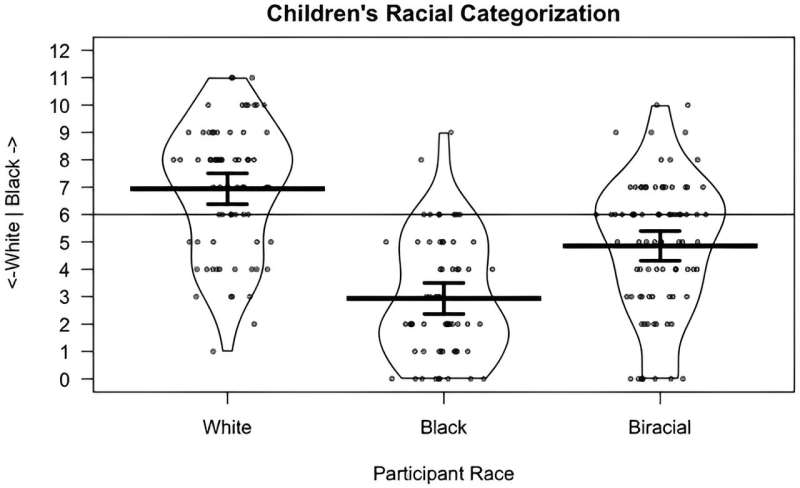This article has been reviewed according to Science X's editorial process and policies. Editors have highlighted the following attributes while ensuring the content's credibility:
fact-checked
peer-reviewed publication
trusted source
proofread
How people perceive multiracial faces isn't always so Black and White, study finds

Barack Obama. Meghan Markle. Trevor Noah. Depending on your race, you might consider these and other Multiracial people as Black, White, or somewhere in-between, according to new research by psychologists at Duke University and the University of Chicago.
Their report finds that Black and White children and adults categorize racially ambiguous faces differently. White people more often see Multiracial faces as Black, whereas Black people more often see Multiracial faces as White.
Multiracial participants, however, showed less bias when forced to choose just one race, and categorized racially ambiguous faces as White more often than Black, but less often than Black children did.
The new research, published in the journal Developmental Science, is part of a growing effort to consider how a person's own identity affects how they label Multiracial people, which is a rapidly growing demographic. In 2010, 9 million people identified as Multiracial, but in the last decade the number has increased more than three-fold, to 33.8 million people.
The U.S. Census only started offering people the option to choose more than one race in 2000, which was likely due in part to the long-held assumption that people universally categorize other people's race based on hypodescent.
Like the "one-drop rule," hypodescent-based categorization assumes a person with both a Black and White parent would always be considered Black or whichever the socially suppressed racial group was for a Multiracial person.
As it turns out, that depends on who you're asking.
"We thought this is how it always worked, because we've only been seeing it from one perspective," said Analia Albuja, Ph.D., an assistant professor of psychology at Northeastern University, and the lead author of the new study. "Our study shows how things are a little bit different when you actually consider different racial backgrounds."
During her time as a postdoctoral researcher in the lab of Sarah Gaither, Ph.D., the Nicholas J. and Theresa M. Leonardy associate professor of psychology & neuroscience at Duke, Albuja helped analyze a large dataset to get at how one's own race might impact their categorization of someone else's.
Gaither, back when she was a postdoctoral researcher herself in Chicago, recruited 215 children and their parents from the area and asked them whether a Multiracial face appearing on a computer screen looked more like a White or Black face that appeared below it.
Albuja pored over the data alongside current graduate student Mercedes Muñoz in Gaither's lab and found that the way kids categorize race isn't always black and White.
"White kids tended to categorize the faces as Black more often than White," Albuja said. "But the Black kids categorized the faces as White more often than Black. And the biracial kids were kind of in the middle. They also categorized the faces as White more than Black, but less so than the Black kids."
Albuja also found that the apple doesn't fall far from the tree.
"Parents also tended to show the same pattern as kids," Albuja said. "That helps us maybe understand how kids come to learn these ideas, if their parents are showing the same kind of patterns."
It's critical then, Gaither says, that we understand how people categorize others, especially those who are Multiracial or racially ambiguous, since it can directly impact how they're treated.
"Categorization is a foundational process that happens really quickly, and a lot of our behavior follows from it," Gaither said. "A lot of what we know so far is based on the idea of hypodescent, but our study shows that it's not so straightforward."
More information: Analia F. Albuja et al, Hypodescent or ingroup overexclusion?: Children's and adults' racial categorization of ambiguous black/white biracial faces, Developmental Science (2023). DOI: 10.1111/desc.13450
Journal information: Developmental Science
Provided by Duke University



















